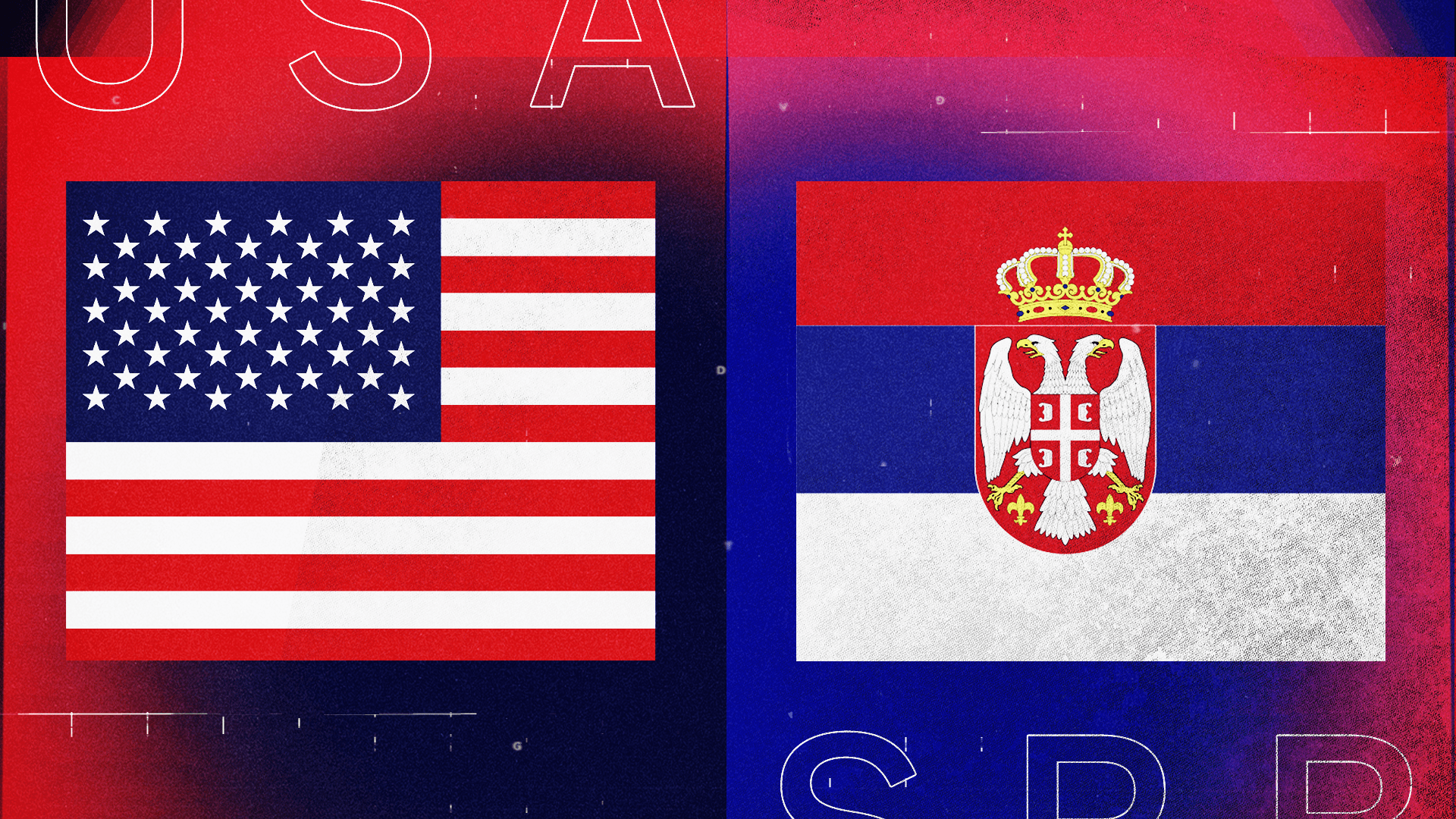Current Relations between the USA and Serbia

The relationship between the USA and Serbia has been marked by both cooperation and tension throughout history. The two countries have navigated periods of conflict and reconciliation, resulting in a complex and evolving relationship.
Historical Context of US-Serbia Relations, Usa serbia live
The US and Serbia have a long history, dating back to the 19th century. The two countries initially developed strong ties during the early 20th century, but relations were strained during the Cold War, with Serbia being part of the socialist bloc aligned with the Soviet Union. After the fall of communism in the 1990s, the two countries began to rebuild their relationship, but this was challenged by the Kosovo War, which saw the US intervening militarily in support of Kosovo’s independence. The US recognized Kosovo’s independence in 2008, a move that Serbia continues to oppose.
Current State of Bilateral Relations
Despite historical tensions, the US and Serbia have been working to strengthen their relationship in recent years. The two countries cooperate on a range of issues, including:
- Economic Development: The US has provided significant economic assistance to Serbia, supporting its transition to a market economy. This assistance has been directed towards various sectors, including infrastructure, education, and healthcare.
- Security Cooperation: The US and Serbia have cooperated on security issues, including counterterrorism and regional stability. Serbia has participated in US-led military exercises and has received training and equipment from the US.
- Human Rights: The US has encouraged Serbia to improve its human rights record, particularly with regard to freedom of speech and the media. The US has also supported civil society organizations in Serbia that promote human rights.
However, there are also potential points of friction between the two countries. These include:
- Kosovo’s Independence: Serbia’s refusal to recognize Kosovo’s independence remains a major point of contention between the two countries. The US continues to support Kosovo’s independence, while Serbia maintains its claim over the territory.
- Russia’s Influence: Serbia has strong historical and cultural ties with Russia, and the two countries have been cooperating on various issues. This close relationship with Russia has raised concerns in the US about Serbia’s alignment with Russian foreign policy.
- Rule of Law: The US has expressed concerns about the state of the rule of law in Serbia, including the independence of the judiciary and the fight against corruption. The US has encouraged Serbia to strengthen its institutions and ensure a fair and transparent legal system.
Economic Ties between the USA and Serbia
The US and Serbia have established significant economic ties, marked by growing trade and investment.
- Trade: Trade between the two countries has been increasing in recent years. The US is one of Serbia’s main trading partners, with significant exports to Serbia including agricultural products, machinery, and chemicals. Serbia’s exports to the US primarily include agricultural products, textiles, and footwear.
- Investment: The US has been a major investor in Serbia, particularly in the energy, telecommunications, and manufacturing sectors. US companies have played a significant role in supporting Serbia’s economic development.
- Development Assistance: The US has provided significant development assistance to Serbia, supporting its transition to a market economy and its efforts to address various challenges. This assistance has been directed towards various sectors, including infrastructure, education, and healthcare.
Key Political Figures and Institutions
Several key political figures and institutions have played a significant role in shaping US-Serbia relations:
- US President: The US President is the head of state and has the ultimate authority over US foreign policy. The current US President, Joe Biden, has expressed a commitment to strengthening relations with Serbia.
- US Secretary of State: The US Secretary of State is responsible for managing US foreign relations. The current US Secretary of State, Antony Blinken, has met with Serbian officials to discuss issues of mutual interest.
- US Ambassador to Serbia: The US Ambassador to Serbia is the US government’s top representative in Serbia. The current US Ambassador to Serbia, Christopher Hill, has been actively involved in promoting cooperation between the two countries.
- Serbian President: The Serbian President is the head of state and has a significant role in shaping Serbia’s foreign policy. The current Serbian President, Aleksandar Vučić, has expressed a desire to improve relations with the US.
- Serbian Prime Minister: The Serbian Prime Minister is the head of government and is responsible for overseeing the implementation of Serbia’s foreign policy. The current Serbian Prime Minister, Ana Brnabić, has met with US officials to discuss issues of mutual interest.
- US Congress: The US Congress plays a significant role in shaping US foreign policy. Members of Congress have expressed various views on US-Serbia relations.
Serbia’s Foreign Policy and International Alignment: Usa Serbia Live

Serbia’s foreign policy is shaped by its history, geography, and its desire to integrate into the European Union. Its primary foreign policy objectives are to maintain stability in the region, strengthen its economic ties with the West, and secure its national interests.
Serbia’s Relationship with the European Union
Serbia’s relationship with the European Union is a key aspect of its foreign policy. It has been a candidate for EU membership since 2012 and is actively pursuing accession negotiations. Serbia’s aspirations for EU membership are driven by its desire for economic prosperity, political stability, and closer integration with the West. However, the path to EU membership is not without challenges. Serbia faces pressure to resolve the Kosovo issue, address concerns about corruption and rule of law, and align its foreign policy with EU positions on international issues.
Serbia’s Stance on Key International Issues
Serbia’s stance on key international issues is often influenced by its historical ties, domestic politics, and economic interests.
- The Kosovo Conflict: Serbia’s relationship with Kosovo remains a significant point of contention. Serbia refuses to recognize Kosovo’s independence, declared in 2008, and continues to maintain close ties with the Serbian population in Kosovo. This issue has been a major obstacle to Serbia’s EU membership aspirations.
- The War in Ukraine: Serbia has maintained a neutral stance on the war in Ukraine, refusing to impose sanctions on Russia. This stance is influenced by Serbia’s strong historical and cultural ties with Russia, as well as its dependence on Russian energy supplies. However, Serbia has condemned the Russian invasion of Ukraine and expressed support for Ukraine’s territorial integrity.
Factors Influencing Serbia’s Foreign Policy
Several factors influence Serbia’s foreign policy choices:
- Domestic Politics: Domestic political dynamics, including the influence of nationalist parties, can impact Serbia’s foreign policy decisions. For example, the strong support for Russia within Serbia has influenced the government’s stance on the war in Ukraine.
- Economic Interests: Economic interests play a crucial role in shaping Serbia’s foreign policy. Serbia is heavily reliant on foreign investment and trade, and its economic ties with the EU are significant. However, its economic dependence on Russia, particularly for energy, also influences its foreign policy choices.
- Regional Dynamics: Serbia’s foreign policy is also influenced by regional dynamics. Serbia seeks to maintain good relations with its neighbors, including Bosnia and Herzegovina, Montenegro, and North Macedonia. These relationships are often complex and can influence Serbia’s stance on regional issues.
US Influence and Engagement in Serbia

The US has been actively involved in Serbia’s political and economic landscape for decades, wielding its influence through various channels to shape the country’s trajectory. From diplomatic engagements to economic aid and cultural exchanges, the US has sought to foster democratic reforms, promote good governance, and solidify its strategic partnership with Serbia.
Diplomatic Channels
US-Serbia relations are characterized by robust diplomatic ties. The two countries maintain embassies in each other’s capitals and engage in regular high-level meetings and consultations. The US has consistently supported Serbia’s European integration aspirations, encouraging its alignment with Western values and democratic principles. Through these diplomatic channels, the US seeks to influence Serbian policies and promote a peaceful and stable region.
Economic Aid
The US has provided substantial economic aid to Serbia, contributing to its post-conflict reconstruction and economic development. This aid has been directed towards various sectors, including infrastructure, education, and healthcare. The US Agency for International Development (USAID) plays a key role in implementing these programs, promoting sustainable growth and improving the quality of life for Serbian citizens.
Cultural Exchange Programs
The US has actively promoted cultural exchange programs between the two countries, fostering understanding and cooperation. These programs provide opportunities for Serbian students, professionals, and artists to experience American culture and engage with their American counterparts. The Fulbright Program, for instance, facilitates academic exchanges and research collaborations, strengthening ties between Serbian and American institutions.
Support for Democratic Reforms
The US has consistently advocated for democratic reforms in Serbia, supporting the development of a strong and independent judiciary, promoting free and fair elections, and encouraging the rule of law. The US has also provided technical assistance to strengthen democratic institutions and promote good governance.
Impact on Serbia’s Political and Economic Landscape
US influence has had a significant impact on Serbia’s political and economic landscape. The US has played a crucial role in supporting Serbia’s transition to democracy, promoting market reforms, and fostering economic growth. US aid has helped to stabilize the Serbian economy, while its diplomatic efforts have encouraged Serbia’s integration into the European Union.
Effectiveness of US Engagement
The effectiveness of US engagement in Serbia is a complex issue. While the US has achieved some success in promoting democratic reforms and economic development, challenges remain. Serbia’s political landscape is still characterized by corruption and political instability. The US continues to face challenges in influencing Serbia’s foreign policy, particularly regarding its relationship with Russia.
Usa serbia live – USA vs Serbia live, eh? Big game, innit? You know, reminds me of those chilled vibes you get in the Adirondacks, sitting back in a Sutherland Great Camp Adirondack chair , watching the sun go down. But yeah, back to the game, let’s see if the US can pull off a win!
USA vs Serbia live, eh? Big game, innit? Hope you’ve got the snacks sorted, but if you’re thinking of upping your game day vibes, check out this power ranger table and chair set. Could be the perfect way to bring some extra energy to your viewing party.
Who knows, maybe it’ll even inspire the team to a win!
